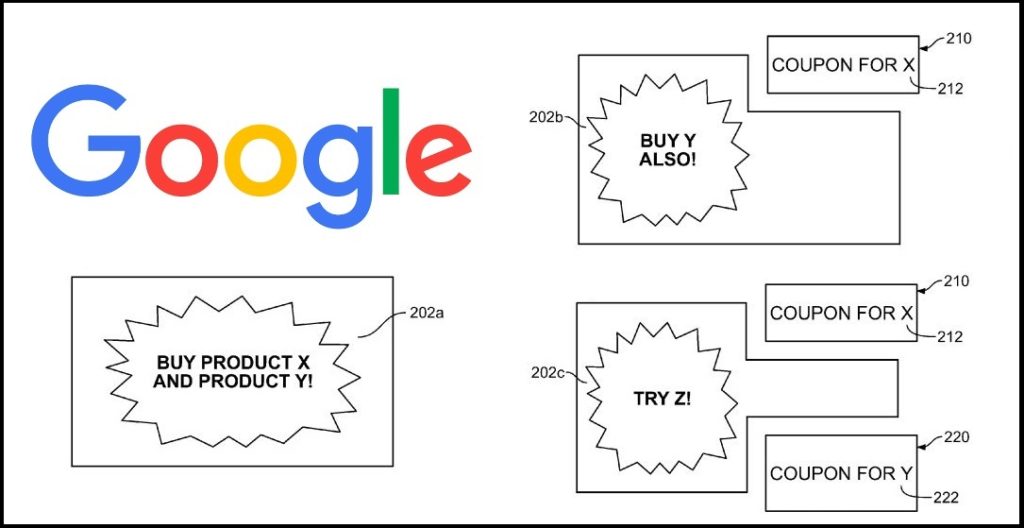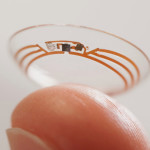
Imagine this – you’re walking down the grocery aisle, and you see a digital display promoting a product and offering coupons. So you reach out, grab a hold of the paper-thin screen – and tear off a piece. And the torn portion of the screen that you’re now holding morphs into a coupon.
It sounds like a strange piece of supermarket science fiction. But Google may be looking to make it a reality.
Google describes the technology (and sketches it out in the images above) in a patent application for a “tearable display”. It’s the latest evolution in a move to create “printed electronics” that merge characteristics of print and digital. Someday, we may see futuristic newspapers like in the Harry Potter movies, where the text and photos move and change. And you may be able to tear out an article – or coupons – that do the same.
In reality, so far, inventors have managed to create flexible, bendable digital screens on heavy-duty pliable material. The thinner they’re able to make the displays, the greater the possibilities they can offer.
Like coupons.
Google’s patent application doesn’t specify what type of material its tearable displays will be printed on. Presumably it would be a paper-like product that would allow you to easily tear off a piece like, well, an actual piece of paper.
But the torn-off piece would become a digital display in its own right, inheriting the characteristics of the original. In one example, Google describes a “lost dog” flyer that might be tacked up on a local bulletin board. A low-tech version printed on paper might include tear-off slips at the bottom with a phone number printed on them, while the photo of the missing dog remains on the original flyer.
In Google’s version, though, if you tear off part of the flyer, the photo and information printed on it transfers to your piece of the display. The piece “can also include a series of changing pictures of the lost dog or a video of the lost dog,” the patent application reads.
Google also envisions its invention being used at the grocery store. “The tearable display can be posted in a supermarket in an aisle that sells Product X and Product Y. Customers walking down the aisle can acquire coupons for purchasing Product X and Product Y by tearing off portions of the tearable display.” The pictures and information on the torn-off portions are then “sized appropriately in response to determining the dimensions of the tear.”
The process would also work in reverse. Once you and others redeem the coupons you tore off, store employees can reattach them to the original display and make it whole again for the next set of shoppers.
Just as some shoppers walk off with entire tearpads full of coupons, or plant themselves by a blinkie machine to take as many coupons as possible, there may be nothing to stop certain avaricious couponers from tearing these high-tech displays into pieces and keeping all of the coupons for themselves. Google likely hasn’t considered this, but as long as we’re speculating about technology that doesn’t actually exist yet, it’s possible the displays could be embedded with short-range communication protocols – so once a torn-off coupon is out of range of the original display, it wouldn’t work anymore. That would be one way to keep the coupons from showing up for sale on eBay.
But all of that is a long way off. A whole lot of things would have to happen for the concept as described to become reality. First, the display would need to be printed on material thin enough that it would actually be tearable. And the printing process would need to be inexpensive enough to allow for mass production.
For now, Google isn’t saying what its plans are. The company merely released its standard statement when asked about patents: “We hold patents on a variety of ideas – some of those ideas later mature into real products or services, some don’t. Prospective product announcements should not necessarily be inferred from our patents.”
Harry Potter may not have clipped coupons. But if he did, these might be just the types he’d be clipping. And if this idea of digital displays that double as discounts ultimately becomes reality, we might end up with something that gives a whole new meaning to “digital coupons”.













